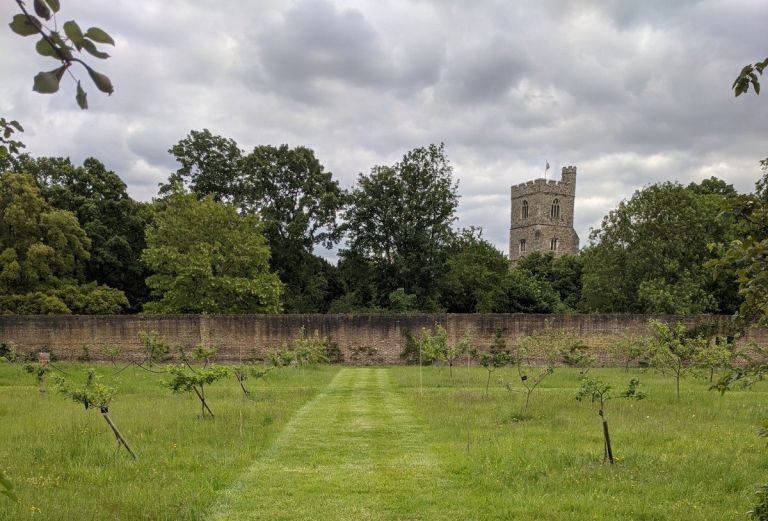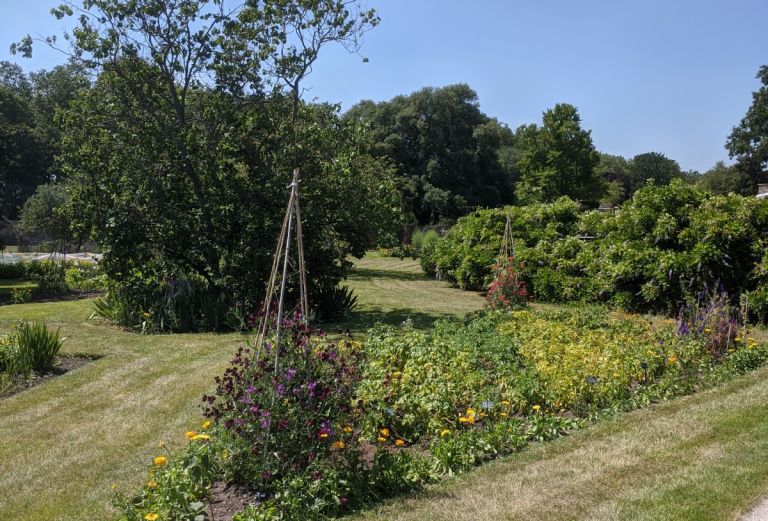
There’s life in the long grass.
When I look back at gardening trends over my lifetime, it seems like having the perfect lawn was an ever-present gardening obsession that almost eclipsed the tending of the plants. I remember playing football in my parents’ garden as a child and finding my father irritated that we damaged the grass. As a professional gardener that has worked in public gardens across London, I can understand his frustrations. Though sometimes when you put a lot of effort into achieving an objective like a picture-perfect lawn, you can forget the real purpose or value of the space.

Let’s look at the considerations involved in getting a good lawn, let alone the perfect one:
Weather conditions: mowing in dry conditions puts less strain on the mower as the grass is easy to cut and is lighter in weight when collected. Try not to mow before frosts. Water frequently in summer of droughts.
Cut height: should as a rule be set to only remove one third of the height of the grass at a time. Then maintain a cut height of 4cm (1.5in) in the spring and autumn and a shorter height of 2.5cm in the summer.
Frequency: cut once a week in spring and autumn when the grass is in rapid growth and once a fortnight in summer when the grass grows more slowly.
Equipment: as with cuts you make to a plant, they will be healthier and recover quicker if the blade you use is sharp and well maintained. Note: be sure not to unbalance a mower blade by sharpening unevenly as that will cause more wear and tear to the mower and more vibrations to the user, which in turn can be a cause of hand arm vibration syndrome.
Collect the clippings: in dry conditions you can leave the clippings if fine enough on your lawn; this will help keep it moist in drought and as they break down the nitrogen released will reduce the amount you will need to feed your lawn. But as a rule all longer clipping should be removed.
Compost: in wet conditions or if your lawn has a thatch (matted dead grass under your growing grass) of more than 13mm it is better to collect the clippings. This is a great source of green material for adding to garden compost and should never be wasted.
Scarify: by raking up the thatch and any moss in spring, this will allow your grass more room to spread and tiller (develop multiple blades) allowing for closer cutting while maintaining healthy grass.
Reseed: after scarifying or if the lawn has had heavy use, it may be patchy in places so re-seeding in spring or in late summer is needed to help cover bare patched rapidly
Weed: any broadleaf plants which will make a formal lawn look less neat and tidy, and can be weeded out quite easily with a hand fork, or for weeds with larger tap roots like green alkanet use a garden fork.
Feed with fertilizer containing nitrogen, potash and potassium as well as other trace elements.

I’ve followed this many times, striving for the perfect lawn, and the resulting lawns are lush, green, cool, and calming spaces – but remembering back to my father’s efforts our family lawn actually looked its best when he’d left it alone.
The white clover (Trifolium repens) had colonised an area where the grass had been worn away near the apple tree forming a white mat of flowers that was a joy to lay in and watch the bumblebees busy at work. The grass grew long in places with dandelions (Taraxacum offinalis) and teasel (Dipsacus fullonum) showing through the longer stems. My family will never forget the spring when a family of foxes emerged from a den behind the shed and the young cubs (with eyes so bright they looked blue) they jumped through the long grass, tussling boisterously as they played!

Now in an era where we are beginning to realise the value of all life and just how interconnected it is, I’m grateful to be an apprentice in a garden so proactive in change. Since I started working for Fulham Palace over a year ago, I was surprised how the weeds were championed and left to grow wild in the woodland areas for their benefits to all kinds of pollinators. The balance of keeping areas of lawn mown for the pleasure of visitors to sit, walk and play has always been weighed against letting them grow long for the benefit of the local ecosystem.
We leave a lot of areas of longer grass with broad-leaved plants self-seeded and sometimes planted in them; these areas are very attractive with many wildflowers and with a mowed border they look restrained and neat. This creates an environment for many insects and small mammals to live in or benefit from. The seeds of the grass are good feed for birds, the flowers provide food for pollinators and the grass stalks will also be used as nesting material for local birds.

It’s hard not to be moved by the contrast of Fulham Palace garden to the city and some of the very preened gardens in it. I love the wild feel of the garden here: the focus on organic, sustainable practice and the abundance of life, so much so that I can’t see myself striving for a perfect lawn without seriously considering what that means in the future. In fact, if I were to design my dream London garden tomorrow there would be no lawn at all; perhaps just an area of white clover to lay in.
Matt Weston, garden apprentice